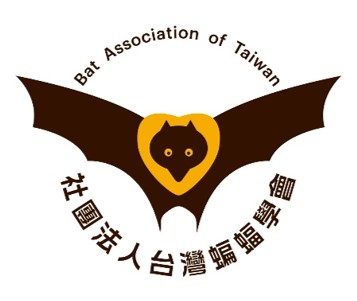蝙蝠研究
2004_台灣葉鼻蝠(Hipposideros terasensis)族群生態學_鄭錫奇
出版年份:2004
研究生:鄭錫奇
分類:博士論文
題目:台灣葉鼻蝠(Hipposideros terasensis)族群生態學
Title:Population ecology of Formosan leaf-nosed bat (Hipposideros terasensis)
摘要:
本論文的研究主題包括三部分:一、台灣葉鼻蝠群集日活動與年活動模式,二、台灣葉鼻蝠幼蝠成長發育模式,以及三、台灣葉鼻蝠群集的群集數量與組成之季節性變動。
本研究於1995年7月至1996年6月間對南投縣兩處台灣葉鼻蝠群集進行活動模式觀察,其中東光群集在生殖季有幼蝠產出,龍神群集則無生殖現象。整年觀之,兩個群集之數量變動趨勢大致類似:每年2、3月間,蝙蝠出現於棲所;11月間群集量明顯遞減至全部離洞;12月至翌年2月間均不見蝙蝠存留於棲所內。3∼11月間,兩處每月群集量的變動則有所差異,達到高峰期的月份與數量均不同。非生殖群集的蝙蝠開始離洞渡冬的時機較早,較生殖群集約早兩個月。蝙蝠個體季節性的遷移、棲所間的短距移動以及生殖期幼蝠的產生應是影響群集數量變動的主要因子。在日週期活動模式方面,台灣葉鼻蝠白天休眠,黃昏日落後始外飛活動覓食,翌日黎明日出前即全部飛返。蝙蝠飛離或飛返棲所的時間和日落、日出時間及光照強度顯著相關。夜間活動模式依每單位小時在棲所外活動之個體數比率,呈現出單峰型或雙峰型兩類型式,生殖群集與非生殖群集呈現的類型不同,端視有否生殖育幼,以及天候狀況而定。相較於高頭蝠與東亞家蝠的出洞時間,台灣葉鼻蝠出洞活動時的光照強度明顯偏低,絕大部分個體幾乎是天黑後始離洞。
1997年5月至1999年5月藉由捕捉標放法對南投縣中寮I的台灣葉鼻蝠生殖群集進行觀察,測量台灣葉鼻蝠幼蝠的體重、前臂長及前肢指掌骨間之軟骨間隔帶(length of total epiphyseal gap)等形態值變化,以探討幼蝠出生後之成長發育模式。一日齡幼蝠的體重與前臂長平均為15.9 ± 3.3 g 與43.3 ± 2.7 mm。出生後幼蝠之體重與前臂長在第1週成長速度最快,之後則趨緩。而軟骨間隔帶則以線性成長的趨勢在出生後10天內增寬至最大值,之後則明顯變窄至癒合。 由logistic growth model 導出的體重與前臂長的成長曲線常數 (Growth constants)為 0.114 和0.09。當前臂長£ 91 mm時,可以前臂長成長曲線所導出的公式估算年齡,而當前臂長> 91 mm時則以軟骨間隔帶的變化所導出的公式較適用。按照這兩個公式,可以用前臂與軟骨間隔帶的測量值估算出台灣葉鼻蝠幼蝠出生後1至44日齡的年紀。由幼蝠成長的資料與3年的捕捉標放結果發現,雄性台灣葉鼻蝠在其出生後的1年內(約11-12個月)即可達到性成熟,而雌性台灣葉鼻蝠則在2年內可達到性成熟。比較世界上其他蝙蝠種類,台灣葉鼻蝠幼蝠的成長速率比許多熱帶性蝙蝠為快,但比大部份的溫帶性蝙蝠慢。
自1996 至 2000年間的不同時期,以直接觀察與捕捉標放法監測南投縣境內三群台灣葉鼻蝠群集—水里、中寮I與中寮II。水里群集幾乎全由雄蝠聚集而成,年間最多的群集數量出現於3月以及7、8月間,大約有400∼700隻。而中寮I與II群集則主要由生殖的母蝠與其幼蝠組成,但二者均伴隨著數目不等的雄蝠;中寮I群集中每月雄蝠所佔的比例多超過50%,而在中寮II群集中的雄蝠比例很少超過30%。此兩處生殖群集在年中有1∼2個群集量高峰,出現於生殖季後之7月至10月間,中寮I群集數量最多時大約在400-500隻之間,而中寮II群集8、9月可多達2,300隻以上。冬季期間, 水里與中寮I的棲洞均無蝙蝠棲留,而中寮II的洞穴則有數以千計的蝙蝠聚集度冬。幼蝠產生與成長離洞、成蝠季節性的遷移、以及不同年齡與性別蝙蝠對棲所忠實性的差異應是造成蝙蝠群集數量和組成季節性變化的主要因素。標放結果顯示,相較於其他性別與年齡個體,雌性幼蝠對其出生的棲洞的忠實度最高。
Abstract:
The studies reported in this dissertation included three parts: (1) the annual and daily activity patterns of the Formosan leaf-nosed bat (Hipposideros terasensis), (2) the postnatal growth pattern of young Formosan leaf-nosed bats, and (3) the annual variation in colony size and composition of of Formosan leaf-nosed bat colonies.
Studies on the daily and annual activity patterns of the Formosan leaf-nosed bat were conducted at a non-breeding colony and a breeding colony in Nantou County between July 1995 and June 1996. The activity patterns of bats of these two colonies showed a similar trend throughout the year. Bats generally arrived at the roosts between late February and early March and left for hibernation in winter. No bat stayed in either roosts from December to next February. However, between March and November, the changes of sizes at these two colonies showed different patterns. In the non-breeding colony, bats arrived in February, and the number of individual reached a peak of more than 600 bats in March. Most bats left from nonbreeding roost in the following months untill September. On the other hand, the size of the breeding colony increased gradually from March to May, and the largest number of bats congrugated appeared in September and October (but < 100 bats). The number of bats decreased quickly in November to zero. Most bats in the breeding colony left their roost two months later than in the non-breeding colony. Daily activity pattern showed that the Formosan lea-nosed bats emerge at dusk and return to the roosts at dawn. The timing of activities was significantly correlated to the time of sunset and sunrise, as well as light intensity. Activity patterns of these two colonies were either unimodal or bimodal throughout the night in different months. The difference may be due to the breeding state of bats in the colonies or the weather condition. Finally, we found that Formosan leaf-nosed bat emergened at a much lower light intensity than did the other two bat species (Scotophilus kuhlii and Pipistrellus abramus) in Nantou County.
To examine the postnatal growth pattern of young Formosan leaf-nosed bats, changes in body mass, length of forearm, and length of the total epiphyseal gaps of young were recorded. Length of forearm and body mass of neonates 1-day old averaged 43.3 ± 2.7 mm and 15.9 ± 3.3 g, respectively. Length of forearm increased the fastest in the first week, but the rate of increase decreased thereafter until it reached a similar size to that of adults in the 6th week. Mean body mass of young also increased the fastest in the first week. By the third week, they achieved ca. 70% of the mean postpartum mass of adult females. Length of total epiphyseal gap increased to its maximum size at about 10 days after birth and subsequently decreased linearly before young bats were able to fly independently. The equation for estimating age based on length of forearm is valid when forearm length is £ 91 mm, whereas the equation for estimating age based on length of total epiphyseal gap is valid when forearm length is > 91 mm. These 2 equations make it possible to estimate the age of young H. terasensis between 1 to 44 days old. By applying the logistic model to derive the growth curves of length of forearm and the body mass for young H. terasensis, a growth constant of 0.114 was obtained for the increase in body mass. Subsequent monitoring suggested that male and female H. terasensis are capable of reaching sexual maturity in their first and second year, respectively. When compared to other bats, the growth rate of H. terasensis was faster than that of many tropical species, but was slower than that of most temperate species.
Three colonies of Formosan leaf-nosed bat, at Shuili, Chungliao I, and Chungliao II in Nantou County, central Taiwan, were monitored by both direct observations and mark-recapture for different periods between 1996 and 2000. The Shuili colony was mostly comprised of adult males. The size of this bachelor colony peaked in both Mar. and July~Aug., with about 400~700 individuals. The proportion of male bats at the Chungliao I colony was over 50% in most months except in Mar. At Chungliao II, however, the proportion of male bats was less than 30% almost year-round. Other members of the 2 colonies were mostly breeding females and their young. One or 2 peaks in numbers were found in these 2 breeding colonies in different years, with a maximum of 400~500 individuals at Chungliao I between July and Oct., and more than 2300 individuals at Chungliao II in Aug.~Sept. In winter, large numbers of hibernating bats were found only at Chungliao II. Birth and natal dispersal of the young and seasonal migration of adults contributed to temporal changes in size and composition of these colonies. Juvenile female bats showed higher fidelity to their natal roost than did males and bats of other ages.
